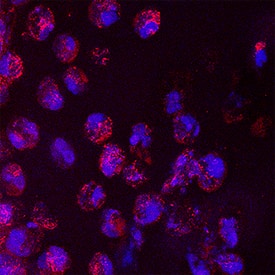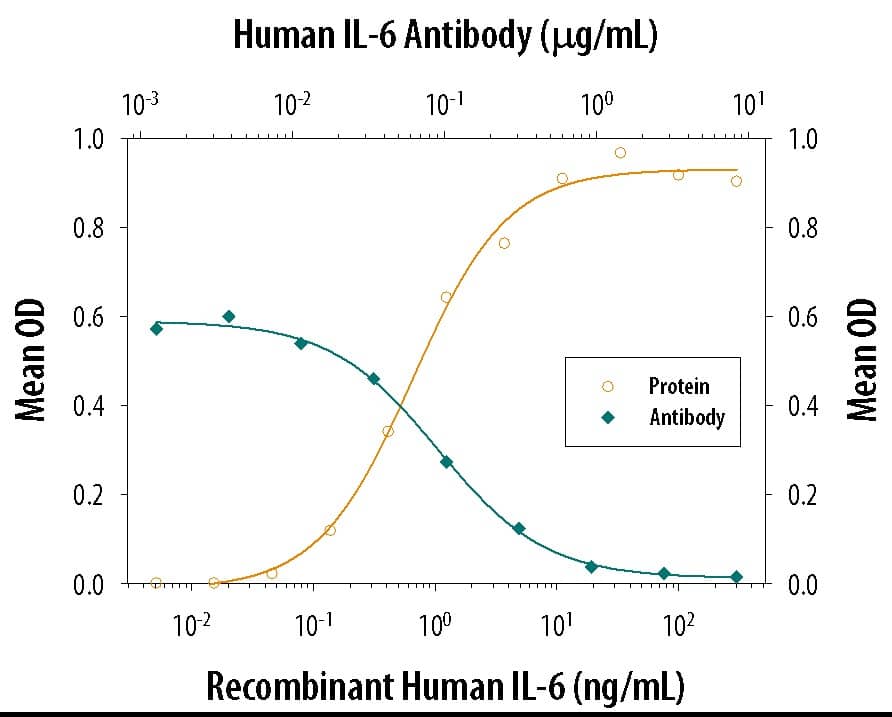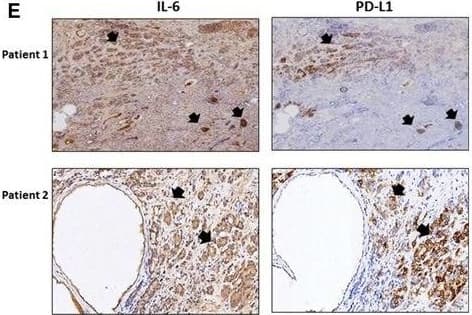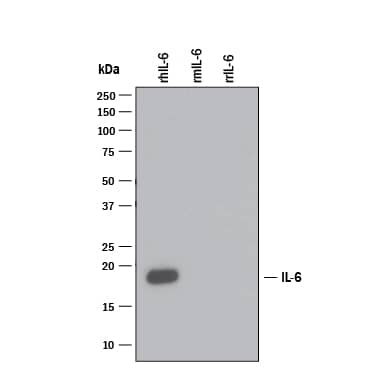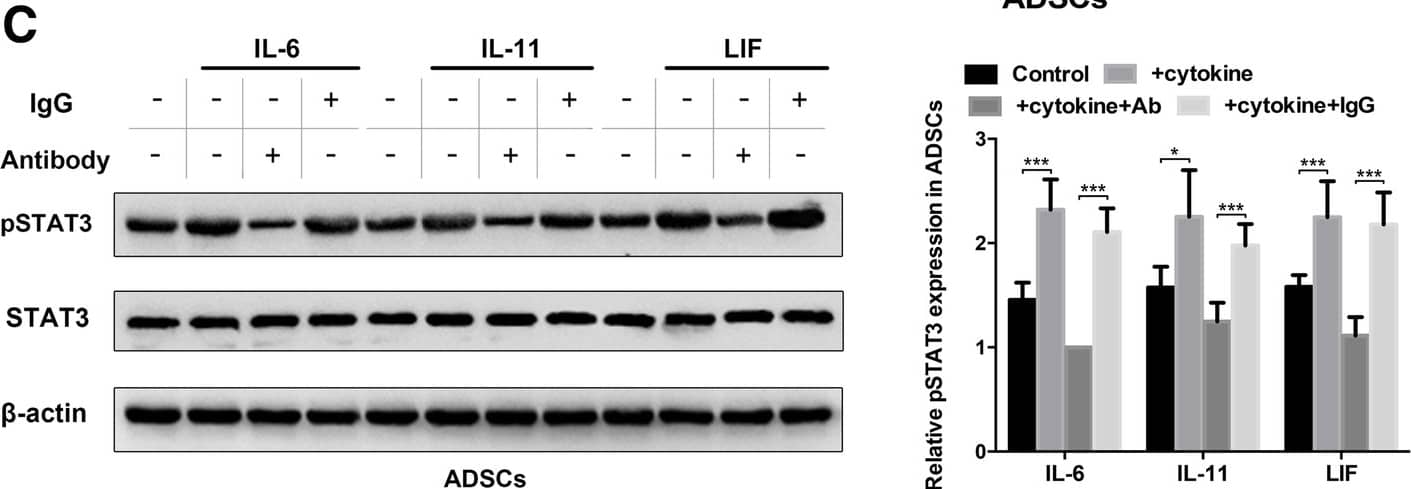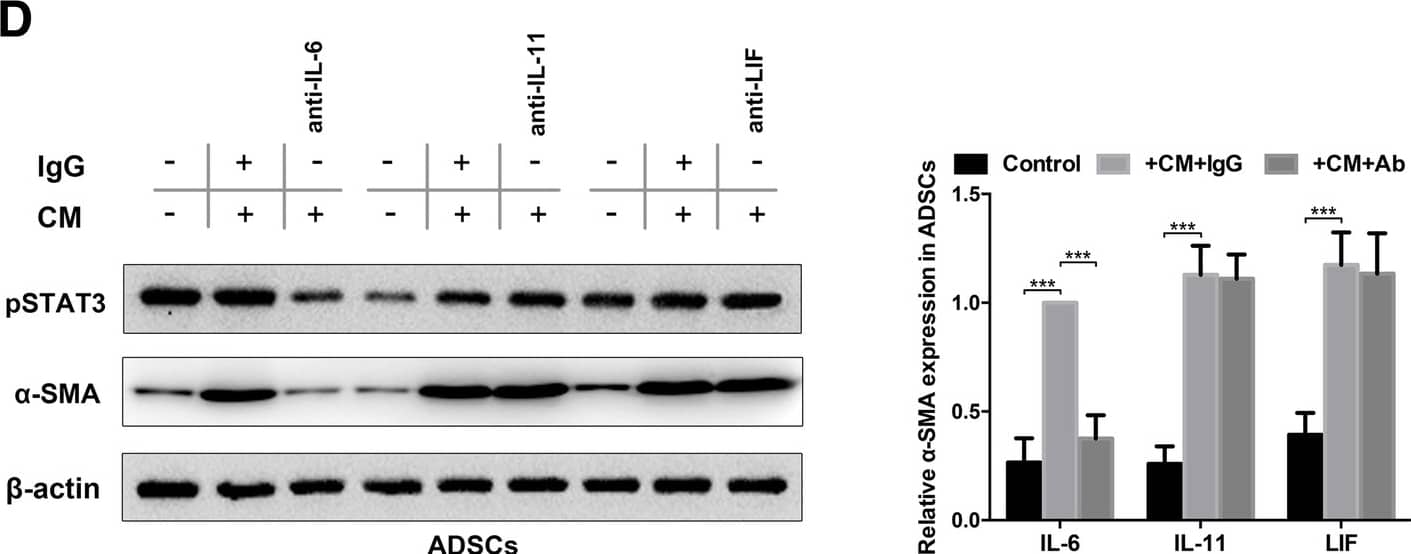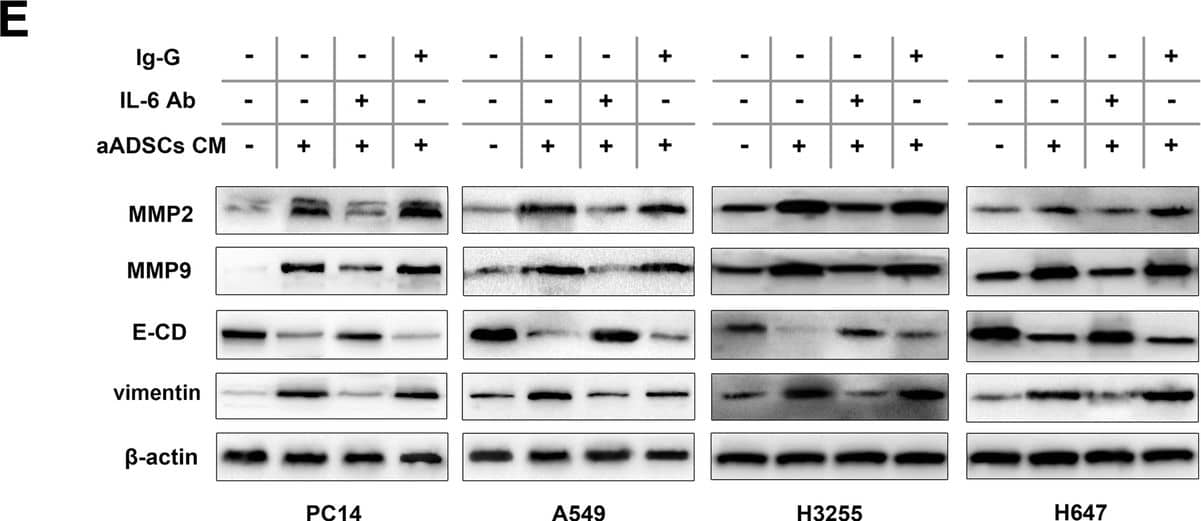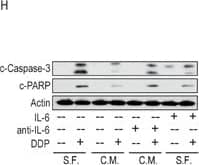Human/Primate IL-6 Antibody Best Seller
R&D Systems, part of Bio-Techne | Catalog # MAB206

Key Product Details
Validated by
Biological Validation
Species Reactivity
Validated:
Human, Primate
Cited:
Human, Mouse, Rat, N/A
Applications
Validated:
ELISA Capture (Matched Antibody Pair), Immunohistochemistry, Neutralization, Western Blot
Cited:
Affinity Chromatography, Antibody Array Development, Array Development, Biosensor Analysis, Block/Neutralize, Electrochemiluminescent Assay, ELISA Capture, ELISA Detection, ELISA Development, ELISA Development (Capture), Flow Cytometry, Immunoassay Development, Immunocytochemistry, Immunohistochemistry, Immunohistochemistry-Frozen, Neutralization, Western Blot
Label
Unconjugated
Antibody Source
Monoclonal Mouse IgG1 Clone # 6708
Product Specifications
Specificity
Detects human and primate IL-6 in ELISAs and Western blots. In Western blots, this antibody does not cross-react with recombinant mouse (rm) IL‑6, rhOSM, rhLIF, rhIL‑11, rhgp130, or rhCNTF.
Clonality
Monoclonal
Host
Mouse
Isotype
IgG1
Endotoxin Level
<0.10 EU per 1 µg of the antibody by the LAL method.
Scientific Data Images for Human/Primate IL-6 Antibody
Detection of Recombinant Human IL‑6 by Western Blot.
Western blot shows 25 ng of Recombinant Human IL-6 (Catalog # 206-IL), Recombinant Mouse IL-6 (Catalog # 406-ML) and Recombinant Rat IL-6 (Catalog # 506-RL). PVDF Membrane was probed with 1 µg/mL of Mouse Anti-Human/ Primate IL-6 Monoclonal Antibody (Catalog # MAB206) followed by HRP-conjugated Anti-Mouse IgG Secondary Antibody (Catalog # HAF007). A specific band was detected for IL-6 at approximately 18 kDa (as indicated). This experiment was conducted under reducing conditions and using Immunoblot Buffer Group 3.IL‑6 in Human Skin.
IL-6 was detected in immersion fixed frozen sections of hyperplastic human skin using Mouse Anti-Human/Primate IL-6 Monoclonal Antibody (Catalog # MAB206) at 8 µg/mL overnight at 4 °C. Tissue was stained using the NorthernLights™ 557-conjugated Anti-Mouse IgG Secondary Antibody (red; Catalog # NL007) and counterstained with DAPI (blue). Specific staining was localized to cytoplasm. View our protocol for Fluorescent IHC Staining of Frozen Tissue Sections.Cell Proliferation Induced by IL-6 and Neutralization by Human IL-6 Antibody.
Recombinant Human IL-6 (Catalog # 206-IL) stimulates proliferation in the T1165.85.2.1 mouse plasmacytoma cell line in a dose-dependent manner (orange line). Proliferation elicited by Recombinant Human IL-6 (2.5 ng/mL) is neutralized (green line) by increasing concentrations of Mouse Anti-Human/Primate IL-6 Monoclonal Antibody (Catalog # MAB206). The ND50 is typically 8.00 - 80.0 ng/mL.Applications for Human/Primate IL-6 Antibody
Application
Recommended Usage
Immunohistochemistry
8-25 µg/mL
Sample: Immersion fixed frozen sections of hyperplastic human skin
Sample: Immersion fixed frozen sections of hyperplastic human skin
Western Blot
1 µg/mL
Sample: Recombinant Human IL-6 (Catalog # 206-IL)
Sample: Recombinant Human IL-6 (Catalog # 206-IL)
Neutralization
Measured by its ability to neutralize IL‑6-induced proliferation in the T1165.85.2.1 mouse plasmacytoma cell line. Nordan, R.P. and M. Potter (1986) Science 233:566. The Neutralization Dose (ND50) is typically 8.00 - 80.0 ng/mL in the presence of 2.5 ng/mL Recombinant Human IL‑6.
Human/Primate IL-6 Sandwich Immunoassay
Please Note: Optimal dilutions of this antibody should be experimentally determined.
Reviewed Applications
Read 16 reviews rated 4.5 using MAB206 in the following applications:
- Block/Neutralize (2 Reviews)
- ELISA (1 Review)
- Functional Assay (1 Review)
- Immunocytochemistry/Immunofluorescence (1 Review)
- Immunofluorescence (1 Review)
- Immunohistochemistry (2 Reviews)
- Immunohistochemistry-Frozen (1 Review)
- Immunohistochemistry-Paraffin (1 Review)
- Microarray (1 Review)
- Microarrays (2 Reviews)
- MSD assay (1 Review)
- Western Blot (2 Reviews)
Formulation, Preparation, and Storage
Purification
Protein A or G purified from hybridoma culture supernatant
Reconstitution
Reconstitute at 0.5 mg/mL in sterile PBS. For liquid material, refer to CoA for concentration.
Formulation
Lyophilized from a 0.2 μm filtered solution in PBS with Trehalose. *Small pack size (SP) is supplied either lyophilized or as a 0.2 µm filtered solution in PBS.
Shipping
Lyophilized product is shipped at ambient temperature. Liquid small pack size (-SP) is shipped with polar packs. Upon receipt, store immediately at the temperature recommended below.
Stability & Storage
Store the unopened product at -20 to -70 °C. Use a manual defrost freezer and avoid repeated freeze-thaw cycles. Do not use past expiration date.
Background: IL-6
Long Name
Interleukin 6
Alternate Names
BSF-2, BSF2, IFNB2, IL6, MGI-2A
Entrez Gene IDs
Gene Symbol
IL6
Additional IL-6 Products
Product Documents for Human/Primate IL-6 Antibody
Product Specific Notices for Human/Primate IL-6 Antibody
For research use only
